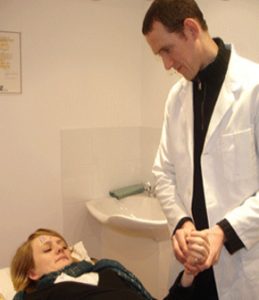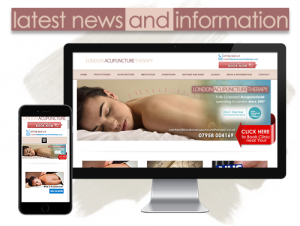The history of acupuncture goes back more than 2,000 years. Acupuncture and the associated traditional forms of Chinese healing are a form of medicine very different to that which has evolved in the western world over the last four hundred years. However, if we look further back in time to classical Mediterranean and European medicine, we can see that the theories and practices of Galen, Hippocrates, and their contemporaries bear greater similarity to the Eastern traditions.
In the West, in recent centuries medical science has built upon the great technological and philosophical advances of the Enlightenment, which has allowed for incredible advances in areas such as surgery, psychoanalysis, and genetics. Sadly, alongside these advances, traditional practices and knowledge have been forgotten. A good example of this is the introduction of penicillin. Whilst undoubtedly a great achievement in the history of humanity, it was seen in the medical world as a panacea for all ills – and traditional herbal remedies were discarded. How many of us know of the anti-rheumatic and anti-inflammatory properties of meadowsweet – or indeed have even heard of this plant that grows widely in our own natural environment. As recently as one hundred years ago, our great grandparents still possessed knowledge such as this.
Looking back at the history of acupuncture in China and other parts of East Asia, this and other traditional forms of medicine have remained more popularly available in society. Focussing specifically on the history of acupuncture, it must be noted that the locating of points on the body with specific medical attributes is not unique to this part of the world. Although sharp stones and bones dating back to 6,000 BC provide the oldest evidence of its use in China, archaeologists suggest that the earliest application of acupuncture treatments in Asia took place on the other side of the Himalayas in India. In Europe, a Copper Age man from 3,300BC found frozen in ice in the Italian Alps in 1991 had a series of tattoos highlighting well-known acupuncture points. Significantly, the uses of these points are for medical conditions that scientific analysis of his body showed that he suffered from. When contemplating the history of acupuncture, it would seem that our ancestors all over the world had some awareness of the potential of acupuncture. Interestingly, even animals show an awareness of how physical manipulation of an area of their body can have a physiological effect. Kangaroos inhabiting the arid heat of the Australian Outback lick a point on the medial surface of their upper limb that has an abundance of blood capillaries near the skin. This cools their body temperature at the hottest times of the day – it also corresponds to a very important acupuncture point on humans called Nei Guan.
With regard to the role of the Chinese in the history of acupuncture, what they did was to establish a vast medical system of theory, diagnosis, and practice. To do justice to these scholars and physicians, we should remember when we refer to this system of medicine as traditional that it has a vast academic, written, and philosophical background. There exists a library of books, treatises, and other works that could not be fully studied in an entire lifetime – and this doesn’t include those that have been lost over the long centuries of the history of acupuncture.
In the West, modern medical theories have seen the mind and body as completely separate, but in traditional Chinese medicine, these are seen as one entity. This means emotional problems may manifest as physical symptoms, or conversely physiological illness or physical overuse can create emotional imbalances. The acupuncturist is able to treat manifestations of physical or emotional ill-health. In fact, even though we may not always be consciously aware of it, these often go hand-in-hand – a teacher of Chinese medicine once remarked that every physical problem, even tripping over a loose paving-stone in the street, has some emotional component. The acupuncturist can also help a patient to address their spiritual well-being, perhaps at a crucial time of change or self-discovery in their life. (It is interesting to observe in the West that the remnants of an earlier mind-body awareness live on in our language – note how notwithstanding our knowledge of the workings of the brain with regard to thought and sentience, when a love affair ends badly we still talk of ‘a broken heart’).
History of Acupuncture: Pulse & Tongue Diagnosis

Looking at the history of acupuncture teaches us the benefits of traditional diagnostic skills such as tongue and pulse diagnosis
During a patients first consultation with an acupuncturist, they are often amused at being asked to stick out their tongue and then to have their practitioner peer intently at it. They may also be surprised by the amount of time spent taking the pulse on both wrists. As well as having a thorough consultation, these examinations are key components of diagnosis. Throughout the long history of acupuncture and traditional Chinese healing, practitioners have talked in terms of listening to the pulse, which is why they take it on both sides, to gauge a broader perspective of that patient’s story. It is said that the most experienced practitioners in China feel no need to ask any questions of the patient – they can understand everything about them from the tongue and pulse alone! This illustrates how the lineage and history of acupuncture informs the practice of this medicine today.
Please click here to find out more about the London Acupuncture Therapy clinics.





